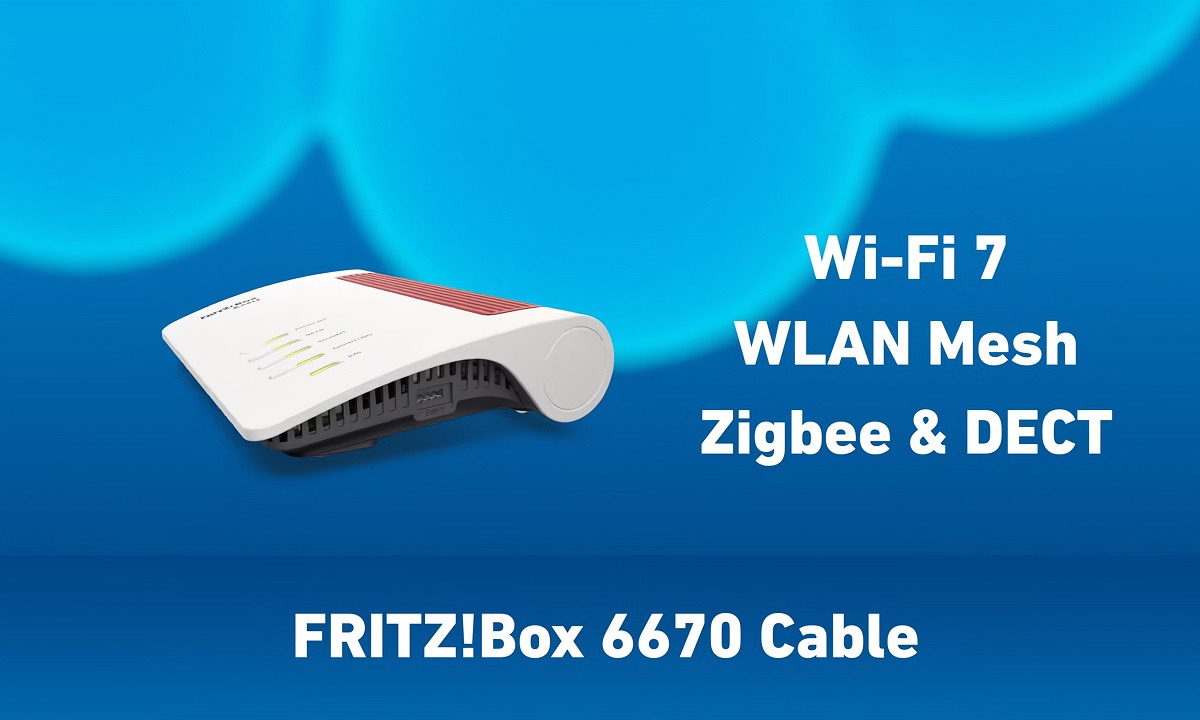The FRITZ!Box 6670 Cable was another of the most important innovations that AVM presented at this year’s IFA. It is a next-generation router that supports Wi-Fi 7 and becomes one of the most important products German companies.
As you might have guessed from the reference to the Wi-Fi 7 standard, these are among others latest generation router which is ready for the future and which will become one of the most powerful and complete AVM solutions. At the design level of the FRITZ!Box 6670 Cable preserves traditional aesthetics routers of the German company, as well as a play of colors with dominant white and red and gray details on the back. They are in yellow to highlight the main connectors.
At the specification level, the FRITZ!Box 6670 Cable appears as a A DOCSIS 3.1 router capable of offering high-speed Internet connectivity, both wired and wireless. It has one LAN/WAN port reaching a speed of 2.5 Gb/s and four LAN ports reaching a speed of 1 Gb/s. This means that it offers a very complete range of connectivity options, but we must not forget that it also has a dual-band configuration capable of achieving impressive speeds in wireless connections.

As I mentioned at the beginning of the article, the FRITZ!Box 6670 cable is compatible with the Wi-Fi 7 standard, can work in the 2.4 GHz and 5 GHz bands and has a channel connection with 2×2 OFDM (A) and 32×8 SC- QAM. Its performance in the 2.4 GHz band is up to 720 Mbps, while in the 5 GHz band it can reach 2,880 Mbps. 3,608 Mbps in both bands.
These speeds are the theoretical maximums that we can achieve in specific conditions, that is, when we move away from the router and there are obstacles and interference, the values \u200b\u200bwill decrease, but it is evident that the higher these maximums are. By doing so, we will achieve better results in a real-world usage scenario.
The FRITZ!Box 6670 cable also offers telephone functions via DECT, IP/SIP, has an analogue telephone connection (FXS) and has an integrated tuner for streaming TV signals in the home network. As you might have guessed, it comes with FRITZ!OS, integrates perfectly with AVM’s ecosystem of free apps, and will receive regular updates to improve its performance and security levels.
We still don’t have details on its launch date and we don’t know its retail price, but the important thing is that AVM is already ready to jump to the Wi-Fi 7 standard, and will offer a very competitive solution appeal to even the most demanding users.














